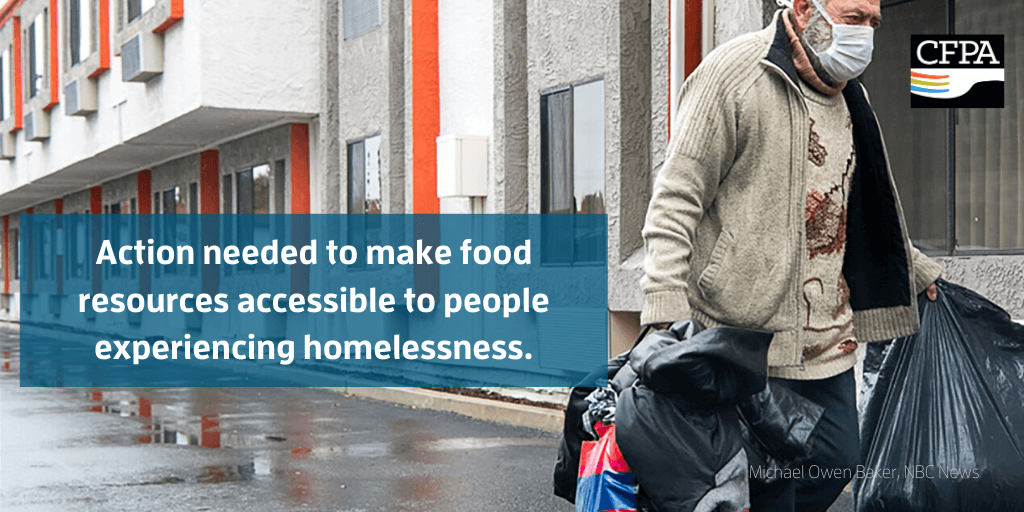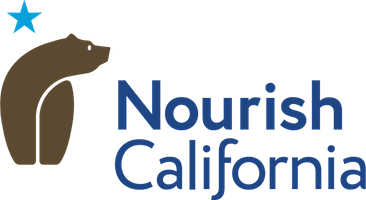The coronavirus pandemic poses a serious threat to the more than 150,000 Californians experiencing homelessness across the state. Living without shelter or access to clean water makes it difficult to comply with CDC’s prevention guidelines, placing this already vulnerable population at high risk for infection. People experiencing homelessness have high rates of acute health conditions that are exacerbated by the physiological stress of living outside, which erodes a body’s ability to fight off illness—raising the risk for more serious complications from COVID-19. This is especially true for Black Californians, who are significantly overrepresented both within the unhoused population and among COVID-19 related deaths, and the growing number of homeless older adults living unsheltered in our communities. While nutritious food is a persistent and unmet need for many people experiencing homelessness, pandemic conditions may further restrict their access to food.
A place to shelter in
Governor Newsom has taken a series of actions to protect Californians experiencing homelessness from COVID-19, which include allocating funds to help local governments move people off streets, out of shelters and into isolation placements. As well as leveraging federal funds and partnering with the hospitality sector to make hotel rooms available for this purpose. As local governments and service providers scramble to shelter the unsheltered, they are challenged by declining ranks of volunteers and the lack of protocols for carrying out such monumental and unprecedented work. These new circumstances are also disrupting ways unhoused Californians used to be connected to food resources.
Food Access Challenges Due to Coronavirus
- Congregate meal site closures: efforts to quarantine the virus have resulted in the closure of many day use facilities where people had previously gone to receive hot meals, and other services.
- County social service office closures: now that many county offices are closed to the public, people experiencing homelessness face new obstacles to receiving public food assistance. Typically, CalFresh applicants without a fixed mailing address would have documents mailed to their county office or another service provider for pickup. Now, designating a mailing address will be more difficult, given the closure of day use facilities and the movement of people in and out of temporary isolation placements.
- Limited Access to Restaurant Meals Program: Without a kitchen to cook in or a secure place to store food, persons experiencing homelessness have few options when grocery shopping with CalFresh. The Restaurant Meals Program (RMP) helps address this problem by allowing CalFresh recipients experiencing homelessness, age 60+, or living with a disability to buy prepared food from participating restaurants with their CalFresh EBT card. Unfortunately, only 10 counties currently operate RMP. AB 942 was passed in 2019 to establish a statewide RMP, and implementation is expected this Fall.
Additionally, many RMP restaurants in participating counties have closed their dining rooms and are only accepting mobile and drive-thru orders. Even if people have the mobile technology and internet connection to place an online order, CalFresh transactions can only be completed by swiping the EBT card at point of sale. Alternative purchase options made available to people experiencing homelessness vary by retailer.
- Lack of Transportation: Schools and food banks are making food resources available, and congregate meal sites are converting to grab & go service models. However, access to these resources is limited generally to those who have a car. But for the majority of people experiencing homelessness, transportation, particularly in rural areas, remains challenging.

Food Resources for People Experiencing Homelessness
CalFresh Food Assistance
People experiencing homelessness who meet residency requirements can apply for CalFresh benefits, and are granted some special rights:
- Eligible to receive benefits in three days with CalFresh Expedited Services.
- No semi-annual reports.
- Eligible for a flat $143 shelter deduction.
- Eased verifications, such as allowing a case worker or shelter staff to verify identity.
- Flexibility in establishing where applicants/recipients have documents mailed.
- Eligible for the Restaurant Meals Program.
New coronavirus-related flexibilities made available by the USDA and CDSS could further reduce barriers to CalFresh for people experiencing homelessness by:
- Waiving the intake interview and telephonic signature requirement.
- Temporary suspension of the three-month time limit on CalFresh for adults under age 50 without dependents.
- The USDA has approved California’s EBT Online Purchasing plan. California is currently working on implementation details and launching on April 28th.
Grocery Distribution
Food banks and pantries across California are mobilizing to meet increased need during the pandemic. To maintain social distancing, many food banks are doing drive-thru distributions. People without a car will need to make sure whatever distribution site they chose offers walk-up service. Use this food bank locator to find a nearby by distribution site.
Grab & Go School Meals
Any child under age 18 can access grab and go school meals during COVID-19-related school closures. For more on how child nutrition programs are adapting to the pandemic, see COVID-19 Response: Resources for School-Aged Children.
WIC
During the crisis, participants and applicants do not have to physically come into the clinic to enroll or re-enroll. Additional flexibilities are detailed here: COVID-19 Response: Resources for Young Children.
Further Action Needed to Increase Food Access
The COVID-19 pandemic adds a new element of uncertainty for people experiencing homelessness and may worsen food insecurity for an already vulnerable population. Further policy action is needed to ensure unhoused Californians have access to existing and new food resources during and after this crisis. For a full list of COVID-19 policy priorities, see our COVID-19 Policy Agenda.
Policy Opportunities
- Provide Options for In-Person CalFresh Services
Ensure paper applications are available outside of closed offices, with an accessible drop box to process applications and other required paperwork. - Consider New Models of EBT Card Issuance
Explore opportunities to partner with trusted CBOs and application assisters to issue EBT cards to CalFresh participants without a fixed address. - Expand Restaurant Meals Program
Establish RMP in all 58 Counties, establish a simplified process for certifying RMP retailers, and require that retailers have a process in place for allowing CalFresh EBT purchases while dining rooms are closed.
Questions? Contact: Gabby Tilley at 213.254.5123 or visit www.cfpa.net/covid19




